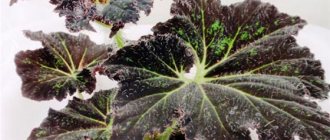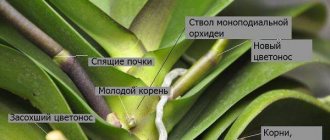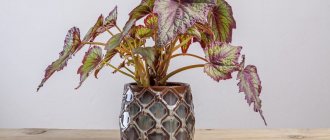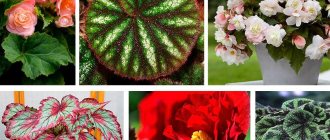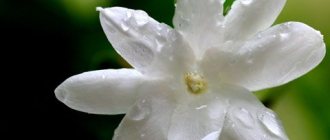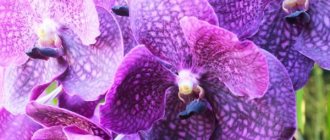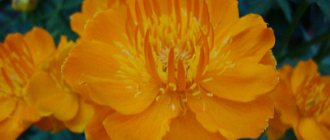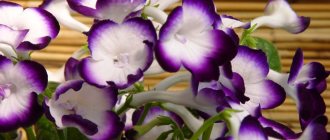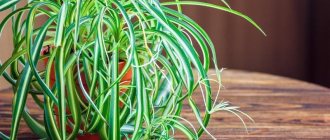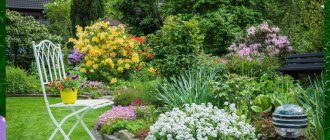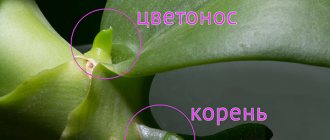One of the most popular plants in our country is the royal begonia from the begoniaceae family. Its homeland is the tropics and subtropics. This family can often be seen in the mountains and on the ocean coast. They prefer moisture and warmth. Ease of care, variety of colors, and unpretentiousness have made royal begonia a welcome guest in many homes and offices.
The distinctive features of the plant are unisexual flowers, a fleshy stem, asymmetrical leaves and a thick root.
Snail
This is a unique variety of begonia. With this interesting plant, you can create a tropical corner right in your apartment.
The flower is a compact bush up to 30 cm high. Its large round leaves have a two-color color. The leaf blade is greenish-brown in color, in the central part there is a wide silvery pattern in the form of a curl or spiral, reminiscent of a snail shell. The surface is matte, covered with short burgundy hairs. The base of the leaf is also twisted into a spiral.
LiveInternetLiveInternet
Tuesday, December 27, 2016 17:31 + to quote book Decorative foliage begonias
"Baby Dress" is a compact rhizome begonia. This beauty has rather large leaves of a juicy golden-green color on short petioles, twisted into a double snail at the base. The edge of the sheet is decorated with a contrasting red-brown ruffle and touching fibers. Begonia “Baby Dress” brings a sunny spring mood to your window.
Begonia "Black Fang". Compact rhizome variety. The leaves are velvety burgundy-black with a deeply indented edge, with bright light green veins running from the center. The base of the leaf blade is twisted into a double snail. This variety will decorate any collection!
Decorative deciduous begonia “Charlotte Chiffon” is one of the most spectacular and delicate varieties. The leaf is pearlescent-silver, with a pink-lilac spot in the center of the leaf. The edge of the leaf is wavy, the border is bright pink. This variety bushes well. Sometimes the begonia "Charlotte Chiffon" is sold under the name Pinkpop.
Begonia rex "Charm". The leaves are large, rounded, slightly toothed. The base of the leaf is spirally twisted. The center and edges are dark brown, along the middle of the leaf there is a wide bright green stripe covered with thick silver specks. The delicate peach flowers are quite large and very pretty. Gorgeous bright plant! Royal begonia "Chocolate Cream" is one of the most beautiful hybrid begonias. The leaf is rounded with a sharp tip, slightly toothed, and twisted into two spirals at the base of the leaf. The center of the leaf, the veins and the fringed edge of the leaf are a bright dark brown color. The middle stripe is light green-silver, the edges of this stripe are silvery-pink. Begonia "Escargot". The variety was obtained from crossing the royal begonia and the diadema begonia and received its name because of the leaves twisted into a spiral, reminiscent of a snail shell (from the French “escargot” - “snail”). The leaves are rounded with an elongated tip, corrugated. The central part and edge of the leaf are brown-olive in color, between them there is a wide bright silver stripe. The height of begonia is 30-40 cm. Royal begonia “Fireworks” is one of the most beautiful decorative foliage begonias. The central part of the leaf is black-violet, turning into dark green. On a dark green background there is a pattern of thin dark brown veins and silvery spots. Along the edge of the leaf there is a wide brown border with a purple tint. The beauty of the leaves of this wonderful begonia is mesmerizing! Royal Begonia "Green Gold" is a real beauty. Large rounded leaves with a sharp tip are twisted into a steep spiral. In the center of the leaf is a spider made of bright green veins. The leaf itself is silver with a greenish-blue tint, and the edge of the leaf is decorated with a thin brown ruffle. The leaf petioles are short, giving this variety a compact appearance. "Gryphon" is a new hybrid of the royal begonia. It reaches more than 40 cm in height and width. The leaves are large, maple-shaped, serrated, strongly dissected, dark green with silver strokes between the veins. Unlike rex begonias, the hybrid Griffon begonia is more hardy and is not so demanding on watering and air humidity.
'Helen Lewis' is a vibrant begonia with large, velvety leaves. The edge of the leaf and the center of the leaf are brown-cherry in color, between them there is a wide silver and thin bright green stripe. Begonia will decorate any collection.
Royal begonia "Lillian" has large emerald leaves covered with silver spots, with a pink tint at the base. Along the edge of the leaf there is a wide wavy border the color of dark chocolate. Double shell. One of my favorite varieties!
Begonia coccinea "Little brother Montgomery". A bushy plant up to 60-80 cm high with weakly branching, non-lodging purple shoots. The leaves are maple-shaped, with a slightly wavy serrated edge. The edges of the leaf, center and veins are dark green with a bronze tint, between them there is a silvery zone of dense specks.
Royal begonia "Merry Christmas". A medium-sized plant up to 40 cm high with a shortened stem and elongated heart-shaped asymmetrical finely toothed leaves. The center of the leaf is chocolate brown, gradually turning into a crimson and then olive green stripe. There is a thin brown border along the edge of the leaf. This begonia will always create a bright spot among other plants. Begonia "November Frost" is a compact and spectacular rhizome begonia! The leaves are medium-sized, maple-leaf-shaped, with a spiral twist at the petiole. The main background is silver-gray with a metallic tint. The narrow border along the edge of the leaf is dark brown. The central and numerous small veins are also dark, gray-brown. It reproduces well and is completely unpretentious!
Decorative foliage begonia “Pearle de Paris”. The height of the plant is about 30 cm, it forms a lush bush. The light silver sheet is decorated with dark veins. The edge of the leaf is wavy with a pink border. Begonia 'Purple Snow' - also known as 'Madame Butterfly' - is a wonderful plant with medium-sized leaves curled into a snail shape. Silver leaf. From a dark green to a silver speckled center, dark green rays run along the veins. Along the edge of the leaf there is a narrow, wavy, jagged, dark green stripe with a burgundy tint. My very first and most favorite begonia. Royal Begonia 'Rohceart' captivated me at first sight. The leaves of this beauty are rounded with a slightly elongated tip, twisted into a spiral at the base, and the edge of the leaf is fringed. The velvety leaves are brown in the center and along the edges, the middle part of the leaf is a rich dark green color dotted with bright silver spots. One of the most beautiful varieties! Begonia imperial, variety "Silver Jewel". A perennial herbaceous plant up to 25-30 cm high. The leaves are very showy, broadly ovate, entire, pointed. The surface of the leaf blade is covered with papillae, which give tuberosity and roughness to the entire leaf blade. The leaf is dark olive green, the veins are light green, along the veins there are silver-turquoise zones, occupying about half the surface of the leaf. A true masterpiece of nature! I constantly admire this beauty!
Begonia “Stained Glass” is a hybrid compact begonia up to 30 cm high. The leaf is obliquely heart-shaped with a sharp tip, pearl-silver.
The middle of the leaf and the stripe along the edge of the leaf are ruby-burgundy, the leaf petioles and stem are also burgundy. This begonia bushes well and forms a lush, bright bush. Caring for decorative deciduous begonias. Lighting.
Decorative deciduous begonias are shade-loving plants; eastern or southwestern windows are perfect for them.
If the sun looks into your windows for a long time, and you definitely want to grow a beauty with wonderful painted leaves, you will have to protect it from direct sunlight with a curtain or other, more hardy plants. Decorative deciduous begonias grow well in artificial light, but it is the diffused sunlight that gives begonia leaves a rich and bright color, especially for varieties with pink and red leaves. The color of the leaves of some varieties of royal begonias is so dependent on lighting that two plants of the same variety grown in different conditions will be completely different from each other. Watering.
Decorative deciduous begonias need careful regular watering.
The soil should always be slightly moist, but not wet - deciduous begonias do not tolerate excessive dampness. Excess water should flow freely from the drainage holes, water for irrigation should be soft and settled. Temperature.
Begonias feel great at temperatures of 18-22°C.
At lower temperatures, watering is reduced; cold drafts are contraindicated for royal begonias. Humidity.
Deciduous begonias love high air humidity, but they should not be sprayed - unsightly spots may remain on the leaves.
It is better to sometimes give these beauties (as well as our other green pets) a warm shower, leaving them in the bathroom until the leaves are completely dry. Feeding.
Begonias respond very well to feeding.
For begonias, use fertilizers for ornamental foliage plants (with a high content of nitrogen and potassium) according to the instructions. The soil.
Decorative deciduous begonias need nutritious, loose soil with a slightly acidic reaction.
The substrate should be constantly moist, but not wet. I use purchased peat-based soil and add finely chopped sphagnum moss. I also put sphagnum at the bottom of the pot. Pots for begonias.
As with all plants, for begonias you need to select pots “according to their height.”
It is better to replant a young plant several times, gradually enlarging the pot, than to plant the baby in a pot with a large volume of soil - the roots will not have time to absorb the entire volume, and the soil may “sour.” Propagation of deciduous begonias.
Propagation of decorative deciduous begonias is not difficult even for a novice gardener.
They are easily propagated by cuttings, leaf and even part of a leaf. I usually propagate begonias with a whole leaf - this way there is less chance of leaf rotting. I place a clean, healthy leaf in water until roots form. If you do not have time to constantly check the water level, then it is better to place the container with the sheet in a plastic bag. A good root layer will form in two to three weeks. I plant the leaf with roots in a mixture of loose soil with sphagnum moss (it seems to me that babies appear faster in such a mixture) and place it in a greenhouse. I place the children in 100-gram cups, raise them in a greenhouse, and then gradually accustom them to indoor conditions. Rejuvenation of deciduous begonias.
Decorative deciduous begonias lose their attractiveness with age. Every two to three years the plant requires rejuvenation. Bush begonias can be pruned for rejuvenation in early spring, leaving two or three buds. The cut top can be rooted: first put in water until small roots form, then the plant is planted in loose nutritious soil, placed in a greenhouse or in a plastic bag until complete rooting (2-3 weeks). Here you can watch my lecture on growing decorative deciduous and hanging begonias
Galina Shipilova, a collector of Gesneriaceae, a regular participant in exhibitions at the Moscow House of Violets on Pyatnitskaya, shares her experience in propagating and growing ampelous and leaf begonias. October 6, 2013 Website of the House of Violet: https://domfialki.ru/index.shtml Catalog of Galina Shipilova: https://www.flora2010.ru/contacts.html.
Series of messages “DECORATIVE - LEAVED PLANTS.”:
Part 1 - Luxury of deciduous begonia patterns Part 2 - Begonia with decorative leaves Part 3 - Decorative deciduous begonias Part 4 - Homeland of the plant Mason's begonia Part 5 - Unpretentious "emigrant" begonia hogweed Part 6 - Arrowroot Part 7 — How to get rid of pessimism, gain strength and recharge with creativity? Get a begonia at home! Part 8 - The luxury of deciduous begonia patterns
| Categories: | Caring for indoor plants. |
Tags:
decorative foliage begonias
Cited 1 time Liked by: 3 people
Like share
0
Like
- 3
I liked the post - Quoted
- 0
Saved
- Add to quote book
- 0
Save to links
Liked3
0
Alfalfa
A hybrid variety of Coral Begonia with erect reed shoots, reaching a height of two meters. The heart-shaped leaves are quite large, with serrated edges and a pointed tip. The surface is painted in a bright dark green color interspersed with white or silver shades, stripes and clearly defined textured veins. The lower part has a reddish-brown tint.
At the beginning of January, the Lucerne begonia begins its flowering period, which lasts until mid-June. At this time, a large number of peduncles are formed on the plant, on which large pink flowers bloom.
Description
Household begonias belong to the genus Begoniaceae and are herbaceous plants, although there are some species whose stems are woody. As an outdoor and greenhouse crop, begonia has become widespread in many countries of the world, but the birthplace of the flower is considered to be a territory with a tropical and subtropical climate - the Amazon basin in Brazil, the central part of the African continent, as well as the countries of Southeast Asia.
Under natural conditions, begonia prefers shady areas with diffused light, high humidity and loose, slightly acidic soils. Begonia easily withstands rising temperatures, but does not tolerate excessive soil moisture. Begonia came to us during the reign of Emperor Peter the Great, when several dozen plants were brought to the country from Holland. Today, huge collections of this beautiful plant adorn the largest botanical gardens in Moscow, as well as in St. Petersburg and Novosibirsk.
The genus of begonias includes many of the most interesting species: there are bush and tuberous, amperous, as well as decorative deciduous and flowering - any gardener will always find the variety that he likes and will become a real highlight of the interior. Today, “grandmother’s” begonias are experiencing a new surge in popularity, this is not surprising, because they personify unshakable classics and beauty. And even the fact that most of these plants are poisonous does not prevent them from remaining a spectacular interior decoration.
Most begonias are limited in length to 20-40 cm, but this rule has rare exceptions - science knows very tiny varieties, as well as gigantic ones that grow more than 1 meter. Leaf blades grow on pubescent shoots; they can be round, lanceolate, heart-shaped, as well as maple-shaped and lobed. The contours of the leaves are hidden by pointed teeth along the edges.
By the way, such a carved edge at one time became the reason that some begonias were included in the same row as other dangerous indoor plants, but this bad reputation quickly dissipated. The jagged edges give the plant a rather prim and aristocratic appearance.
All begonias have a pronounced thick vein in the center, it divides the surface into 2 unequal parts , this asymmetry only emphasizes the originality of texture and shade. The leaves can be matte or waxy, velvety or satin, and the shades can be very diverse - often with pronounced silver, bronze and gold notes.
Most begonias bloom at home, however, not all varieties are distinguished by beautiful flowering - in leaf varieties the flowers are rather small, inconspicuous, and therefore do not serve any decorative function.
Fireworks
A hybrid variety with a height of 15 to 30 cm with large, textured leaves that attract attention with an unusual color. The center of the Fireworks Begonia leaf is a rich brownish-black shade that fades to dark green. There is a purple border along the edge of the plate. The outside of the leaf is completely covered with a thin network of black veins, which connect to the border and form a lace pattern.
Recommendations from an expert: rejuvenate correctly
Royal begonia is replanted every spring. An equally important procedure is plant rejuvenation, which is carried out every 3-4 years. With the right approach, you can significantly increase the life of a plant and grow a young bush from a mother cutting.
No, we will not rewrite information that is repeated many times on various sites. We better use the experience of knowledgeable flower growers Pavel and Elena Enikeev, who have been leading the YouTube channel since 2009.
Rejuvenation of the royal begonia Lilian
The royal variety Lilian is used as an example. The rejuvenation procedure consists of several stages:
- Removing fresh and old flower stalks. Old ones fall off at the slightest touch, fresh ones are cut off with sterile sharp scissors.
- Inspecting the plant and soil in the flower pot for dry leaves. Remove them also mercilessly, as they can be carriers of all sorts of diseases.
- Removing plant leaves with spots and other signs of illness. They should easily lag behind the bush. Such leaves should be thrown away immediately and not used to propagate begonias.
- Removing low-growing leaves, if any (applies to plants with elongated stems that will have to be buried when transplanting). These leaves can and should even be used to produce young plants.
- Removing a plant from a flower pot. A healthy begonia has white roots. If the soil is moist, the roots take on a yellowish tint.
- Preparing a new pot. It should be larger in diameter than before. If the begonia grew in a 12 cm container, it should be transplanted into a 15 cm container.
- Trimming soil penetrated by the root system. You can simply unscrew and tear off half of the substrate-root mass with your hands. The top layer should be left for better survival of the plant in the new container.
- Preparation of a soil mixture from leaf soil, turf soil, peat, river sand (2:1:1:1) and a small amount of crushed coniferous tree bark.
- Planting begonias. Deepen the bush to the level of the lower leaves, fill all the voids with substrate, and tamp lightly. To prevent the plant from staggering, the trunk circle must be pressed with your fingers.
Silver Star
A herbaceous plant reaching a height of 25-30 cm. The shrub has large, spectacular oval-shaped leaves with a pointed apex. The surface is lumpy due to small papillae located on it. The color is rich olive with light green veins, along which there are silvery areas that occupy most of the surface.
How to propagate
Reproduction is not as labor-intensive a process as it might seem at first. First of all, decide for yourself which method of obtaining a new bush is right for you, thoroughly study the sequence, features of the technological process and start acting.
Cuttings are the most win-win and popular propagation option for any type of begonia, including royal ones. Cut a piece of the trunk with leaves, place the cut side in water and after 3 weeks plant the young roots in the substrate. The same method is excellent for rejuvenating a plant by separating a large cutting. If you decide to use it, remember that in this case the mother plant will lose its decorative effect.
It is easy to propagate begonia using a leaf. Place the cut leaf in water (the length of the stem is no more than 2 cm). After a couple of weeks, when the roots appear, place the leaf in the substrate and cover with film. As soon as a young sprout appears from the center of the leaf blade, deepen the planting to the growth point. The mother leaf will begin to wither, but you cannot cut it off (it becomes a source of nutrients for the baby).
Some leaves produce babies not only from the center of the convergence of the veins, but also from the leaf stalk-petiole. Young shoots easily pass through loose soil and with a 100% probability quickly grow into a strong young plant.
The bright leaves of the royal begonia have extremely pronounced veins. They can also be used to grow new plants:
- Take a leaf with a stem shortened to 1 cm and place it in warm water.
- Having noticed the first roots, make cuts on the back side of the leaf, where the veins are especially noticeable (1-2 for each vein). Do not cut the vein all the way through, just make a snip.
- Lubricate each cut with cytokinin ointment (100% guarantee of germination).
- Bury the cutting with roots into the substrate at an angle, so that the leaf takes a horizontal position (you can press the plate to the ground with small pebbles).
After some time, children will appear. They will come out from the center of the leaf, petiole, and cut veins. This method allows you to get from 5 to 8 new bushes at the same time. But such children grow too slowly, so most gardeners propagate Rex begonia by leaves and cuttings.
If you want to grow a “queen” with seeds, be prepared for the fact that during the process of flowering and ripening of the seed pods, the mother plant will lose its decorative effect. Moreover, the result of seed propagation of hybrid varieties does not always meet expectations.
Perle de Paris
The height of the plant does not exceed 30 cm. Begonia is a lush, well-branched, spreading bush with unusually attractive leaves of a silvery hue. The wavy plate is decorated with a pinkish border. There are dark, clearly visible veins on its surface.
Briefly about care
| Type of agricultural operation for caring for Rex begonia | Description of conditions and actions |
| Watering and air humidity | Watering at the root, not very abundant; from spring to autumn - up to 4 times a week (as the top layer of soil dries); In winter, watering is reduced. There is no need to spray; the casting should be wiped periodically with a damp cloth. High humidity required |
| Lighting organization | Diffused sunlight, partial shade in winter requires artificial lighting in summer needs shading |
| Maintaining a rest period | October to March (some species do not hibernate) |
| Creating temperature conditions | From +17 to +25 °C afraid of drafts and low temperatures; rest period not lower than +16 °C |
| Trimming | The first pruning is carried out when the plant height is 10–12 cm; during the flowering period, peduncles that deplete the begonia are removed |
| Making soil mixture | Nutritious, loose, moderately acidic soil mixture of peat, sand, leaf and turf soil (1:1:2:1) You can add vermiculite or pine bark |
| Fertilizer application | Once a month in the spring, nitrogen-containing mineral fertilizers are applied, and in the summer, phosphorus-potassium compounds are applied. Mineral fertilizers should be alternated with organic matter: 200 g of cow manure per 1 liter of water, and do not feed in winter |
| Transfer | Replant annually after dormancy, rejuvenate every 3–4 years |
| Chemical treatment | Insecticides: aphids, poutine mites, greenhouse whiteflies, soft scale insects, thrips; fungicides: gray mold, powdery mildew, bacterial spot, ring spot |
Chocolate Cream
The most beautiful hybrid begonia, distinguished by large leaves and petioles twisted in the form of a spiral. The leaves have an unusually attractive color: the outer surface is bright plum color with pronounced dark brown veins, the middle part is silvery-light green, with a silvery-pink border along the edges. The edge is fringed with small serrations. It appears to glow with a silvery light.
Description
To date, about 1000 varieties , the classification is quite complex, different authors systematize them in their own way. Begonia has been known to flower growers as a houseplant since the 17th century; it came to our country about 200 years ago. Breeders are constantly improving old varieties and developing new ones, which explains such a variety of shapes, sizes and colors of leaves.
Decorative deciduous trees are valued exclusively for their beautiful foliage . They also bloom, but the bloom is inconspicuous and of no value. There are varieties with small leaves, as well as very large ones. A special feature is the pattern of the leaf blade, but each variety has its own pattern.
Origin : tropical and subtropical jungle. It is important to take this into account when choosing a location - it does not like bright sun, prefers partial shade, it is better to place it on a western or eastern window.
Watering and humidity
Since begonia naturally grows in forests, it requires increased humidity . This can be achieved by placing containers of water, wet sand or moss nearby.
You can also place a household humidifier nearby or simply spray the leaves with a spray bottle. Periodically, wash the plant well under a warm shower; this also prevents pests.
soft and settled water Water regularly after the top layer dries. The soil should be evenly moist without excessive drying or flooding.
Top dressing
Fertilizers are used specifically for them or for decorative deciduous plants.
Frequency approximately once every two weeks. It is important not to overfeed, otherwise growth will slow down and the leaves may turn yellow.
It is better to dilute the fertilizer in slightly smaller doses than recommended .
Reproduction
Most species are easily propagated by leaves, as well as leaf blades and cuttings.
It is enough to cut the leaf, dip it in activated carbon for disinfection and place it in sand, perlite or peat, covering it with a transparent glass or film on top. You can put the cuttings in water and wait for the roots to appear, then plant them in a small pot.
You will learn more about reproduction by watching the following video.
Formation
Most begonias require proper shaping .
If the shoots are stretched, then radical pruning is performed. Some hybrids are best renewed from new cuttings.
Read about how to care for decorative deciduous begonia here.
Expert Advice: Mistakes When Reproducing
The Enikeev couple have been running their family project for more than 10 years - a YouTube channel, where they clearly talk about ways to grow all kinds of plants. Today Pavel and Elena will talk about what mistakes are made when propagating decorative deciduous begonias:
- Using the wrong substrate. Substrate is the most important thing when growing plants. A common mistake made by novice flower growers who purchase store-bought soil for begonias. If you don’t want to bother with making a soil mixture, preferring to buy ready-made soil, look for a professional mixture. It is sold in large bags of 150, 200 or 300 kg. But some sites offer smaller packages.
- The blade of the device for cutting cuttings, leaves, or dividing the leaf into fragments is not sharp or thin enough. For some reason, some gardeners use old scissors or serrated knives to work with plants. Such devices crush leaf cells and contribute to their decay.
- Temperature too high. Don't think that babies need heat. The optimal temperature for the development of young plants is +20+24C. Even +25C is a critical indicator leading to illness and death of begonia. It’s not so scary if the temperature drops to +18C. A little cooler is better than hotter.
- Insufficient lighting. By placing beautiful adult plants in the most illuminated place, and pushing greenhouses with fragments into shade or partial shade, people doom the sprouts to death. Young plants get their energy from light. Otherwise, roots will not form, and the development of cuttings will freeze.
- Overwatering. When planting a leaf, the soil does not need to be compacted. Let there be an air cushion between its layers. Watering should be done moderately so that water does not stagnate in the soil. Otherwise, the children will die and the roots will rot.
Each of the above factors is equally detrimental to future begonia. Therefore, it is very important to study possible mistakes and avoid them when growing new plants.
